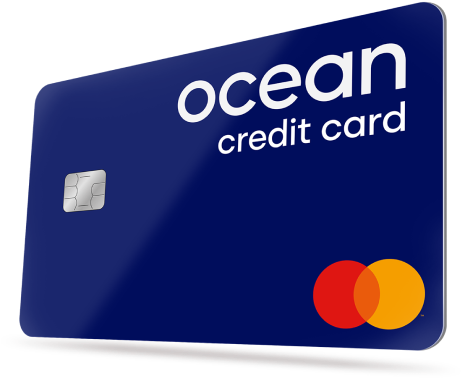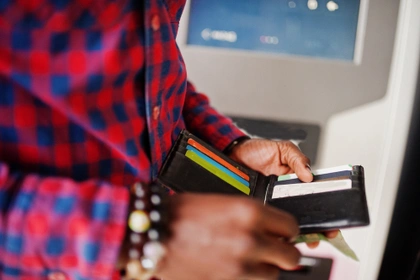Understanding credit utilisation
Credit utilisation is used to describe the amount of credit you are currently using and can also be called ‘utilisation ratio’. If we apply this to credit cards, credit utilisation describes the relationship between:
- how much you’ve spent on your credit card
- how much you could spend if you borrowed up to your maximum credit limit
It’s often expressed as a percentage and is used by financial companies to evaluate the risk of lending you credit. If you are maxing out your credit cards, the higher your percentage will be. In turn, the higher risk lenders will consider to you be, because it gives them the impression that you’re relying heavily on credit to get by.
Total credit utilisation
Total credit utilisation is the overall percentage across all your credit limits but doesn’t include instalment loans.
It’s important to understand your total credit utilisation ratio and how this affects your credit score.
How do I find out my credit utilisation ratio?
If you want to work out your credit utilisation ratio for a single account, simply divide the outstanding balance by the credit limit on the account.
For example, if the limit on your credit card is £2,000 and your balance is £1,000, your utilisation ratio is 50%. Or, if you’ve borrowed £500 on the card, the utilisation ratio is 25%.
To work out your total credit utilisation ratio across the board, add up the credit limits on all your credit cards and add up the outstanding balances too. Then divide the total balance by the total credit limit.
For example, if you have one account with a credit limit of £2,000 and a balance of £1,000 and another account with a credit limit of £1,000 and a balance of £500 - your total credit limit is £3,000 and your total balance is £1,500. Your total credit utilisation is 50%.
What is classed as ‘good’ credit utilisation?
It’s best to keep your credit utilisation ratio as low as possible. Under 25% is considered a good credit card utilisation ratio. But remember that every lender has their own criteria against which they measure applicants.
If you can’t manage this, then you should try and keep it as low as possible to avoid damaging your credit score. Also, try to avoid the temptation to spend more with the credit card – it will only take longer to pay off and may make you appear riskier to lenders.
How does it affect my credit score?
Your credit score determines how likely lenders think it is that you will be able to pay back credit, or how risky you are. The better your credit history, the higher your credit score, and the higher your chances of being accepted for credit.
Using over 90% of your available credit card limit can knock around 50 points off your credit score. Whereas keeping your credit card balance under 30% of your limit could boost it by around 90 points. Not only that, the lower your credit utilisation ratio is, the less likely it is that lenders will see you as a credit risk. It shows that you are a responsible borrower who isn’t reliant on credit.
Remember, your credit score is just one factor that lenders consider. Each lender uses their own criteria. But they will also want to see that you have a good record of paying your bills on time, every time.
What can I do to manage my credit card utilisation?
It’s important to manage your credit card utilisation ratio in order to increase your credit score or stop it from decreasing. Luckily, there are four main ways you can do this.
1. Keep on top of debts
You should avoid the temptation to spend up to your credit limit and make sure you pay as much of your credit card balance off as you can each month. Ideally, you should aim to clear your balance in full so that you don’t have to pay any interest. At the very least you must make your minimum payment. If you don’t, your credit history will be damaged, and you could face interest and late fees.
If you are struggling financially, consider getting free debt advice from organisations like StepChange and Citizen’s Advice.
2. Consider raising your credit limit
If you raise your credit limit on one of your accounts but don’t spend any more on that account, your credit utilisation ratio will go up.
For example, if the limit on your credit card is £1,000 and your balance is £750, your utilisation is 75%. Raising the credit limit to £3,000 would mean that your credit utilisation ratio would drop to 25%.
Only do this if you will not be tempted to spend more of the credit limit because that would put you further in debt. Also bear in mind that if you have a credit card with a large credit limit that you don’t use, a prospective lender may worry about how you would afford to repay them if you maxed out your credit limit on this card.
3. Think about consolidating debts
If you have multiple credit cards, you could consider transferring your debt to a debt consolidation loan. Loans don’t count towards your credit utilisation ratio, so transferring revolving debt to a loan can help to keep your ratio low. As long as you maintain your loan repayments on time, every time, this can help to boost your credit score.
Before you go ahead, you also need to consider the pros and cons of a loan and take into account any interest and charges that may apply. Then you can work out if it’s the best course of action for you.
Also bear in mind that lenders like to see accounts that have been open a long time with a good record. If this applies to your credit cards, it could be worth keeping them open.
4. Don’t over-apply
Making multiple credit card applications within a short space of time can impact your credit score - whether you are rejected or accepted. It can also make you look desperate for cash. So it’s worth using an eligibility checker like QuickCheck to see which credit cards you’re eligible, before you apply. Doing so won’t affect your credit score.
Ocean Credit Card
See if it's a YES before you apply
- Up to £8,000 credit limit
- Checking won't affect your credit score
- Get a response in 60 seconds
Intelligent Lending Ltd (credit broker). Capital One is the exclusive lender.

Disclaimer: All information and links are correct at the time of publishing.






